
The Best 27 Interesting Facts about Costa Rica Revealed!
Interesting Facts about Costa Rica
What many people don’t know, is that there are many interesting facts about Costa Rica.
From its incredible biodiversity to its impact on the world economy. There’s a lot to learn about this amazing country.
Costa Rica is a small country located in Central America. It’s known for its breathtaking nature.
Plus, its lush and vibrant rainforests, stunning beaches, unique wildlife, and vibrant culture.
It has become a popular destination for tourists. Especially for those looking to explore the unique beauty of the region, as well as its rich history.
What is the Capitol City of Costa Rica?
San Jose is the capital city of Costa Rica, located in the central valley region.
Founded in 1738 it has a population of over 335,000 people.
The city has a rich history and culture which is evident in its many museums, galleries, and theaters.
One interesting fact about San Jose. It has one of the largest pedestrian malls in Central America.
Avenida Central is a popular shopping destination where visitors can find everything. From clothing to electronics at affordable prices.
Another notable attraction in San Jose is the National Theater of Costa Rica. It was built in 1897 and features beautiful neoclassical architecture.
The Juan Santamaria International Airport serves as the main gateway. Into San Jose for travelers visiting Costa Rica.
From there, visitors can explore all that this vibrant city has to offer. Including delicious cuisine, exciting nightlife, and stunning natural beauty just outside its borders.
The Geography of Costa Rica
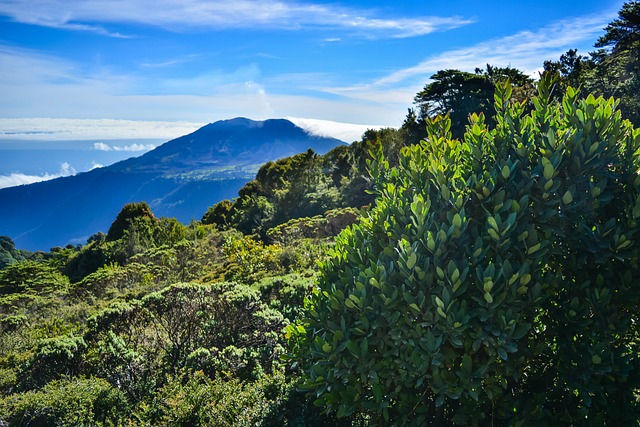
Costa Rica is a small country located in Central America. Bordered by Nicaragua to the north and Panama to the south.
It is about 51,100 square kilometers or 19729.82 square miles in size. And known for its diverse landscape.
Ranging from tropical rainforests and cloud forests to active volcanoes and stunning beaches.
The country also features many national parks that are home to a wide range of wildlife. Including sloths, monkeys, jaguars, toucans, and sea turtles.
White-tailed deer play an important role in the ecosystem. By serving as prey for predators such as jaguars and pumas.
Their grazing habits also help maintain plant diversity within their habitat.
One interesting geographical feature of Costa Rica is its many volcanoes.
There are over 200 volcanic formations in Costa Rica with five being active.
These are the Arenal Volcano,
Rincon de la Vieja Volcano,
Poas Volcano,
Irazu Volcano,
and Turrialba Volcano.
These volcanoes have shaped the landscape of Costa Rica over time. Creating fertile soil for agriculture has helped boost the country’s economy.
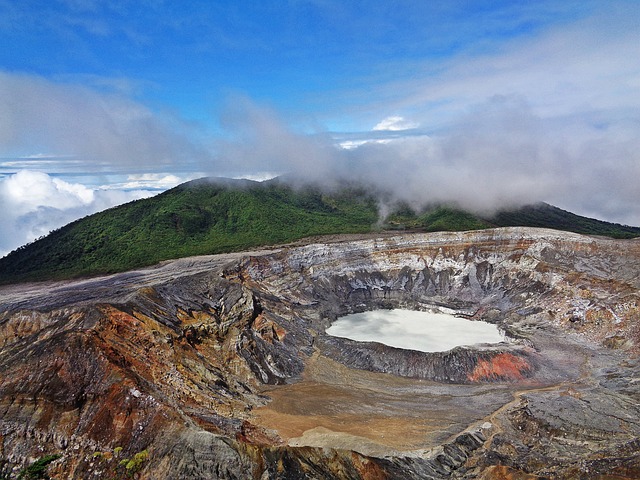
The most famous among these active volcanoes is Arenal Volcano.
This volcano was dormant for hundreds of years until it erupted unexpectedly in 1968. Causing widespread destruction and loss of life.
Today, visitors can hike through the lush rainforest to reach the base of the volcano. And soak in nearby hot springs heated by Arenal’s geothermal activity.
Another popular destination for volcano enthusiasts. Iis Rincon de la Vieja Volcano National Park.
This park boasts not one but nine craters within its boundaries!
Visitors can take guided hikes to explore these volcanic craters. As well as enjoy other activities within the park. Such as zip-lining and horseback riding.
Costa Rica’s many volcanoes offer an exciting glimpse into the country’s geological history.
And provide visitors with unique opportunities to witness nature’s power firsthand.
Another interesting fact about Costa Rica’s geography is its location. On the Pacific Ring of Fire which makes it prone to earthquakes.
Yet, this has not deterred tourists from visiting. As there are plenty of natural hot springs throughout the country.
Which provides a unique experience for travelers. Looking to unwind after exploring all that Costa Rica has to offer.
Another interesting feature of Costa Rica’s geography is its rich biodiversity.
The country boasts over 500,000 species of animals and plants. Spread across its various ecosystems.
Such as tropical rainforests, cloud forests, beaches, mangroves, coral reefs, and wetlands.
This makes it one of the most biodiverse countries in the world.
Visitors who are nature lovers can go hiking or bird watching. In one of Costa Rica’s many national parks or reserves.
Such as Monteverde Cloud Forest Reserve or Tortuguero National Park.
The Isla del Coco
Isla del Coco, also known as Cocos Island is a lush tropical island. Located in the Pacific Ocean off the coast of Costa Rica.
It has gained worldwide fame for its unspoiled beauty and rich marine life.
In 1997, Isla del Coco was declared one of the UNESCO World Heritage Sites. Due to its unique ecosystem and biodiversity.
The island’s location makes it an ideal destination for divers and snorkelers. Who flock here to explore its crystal-clear waters.
Which are home to over 600 species of fish, sharks, turtles, dolphins, and whales.
But Isla del Coco isn’t just a paradise for underwater enthusiasts. It’s also a haven for bird watchers with over 90 species of birds calling this island their home.
One interesting fact about Isla del Coco is that it was once believed to be a hideout spot for pirates. Who would bury their treasures on the island?
Yet, no evidence of such treasure exists or is ever found here.
Besides, visitors can still discover some amazing natural treasures on this magnificent island.
From cascading waterfalls to exotic flora and fauna. Making Isla del Coco one of Costa Rica’s must-visit attractions.
Flora & Fauna in Costa Rica
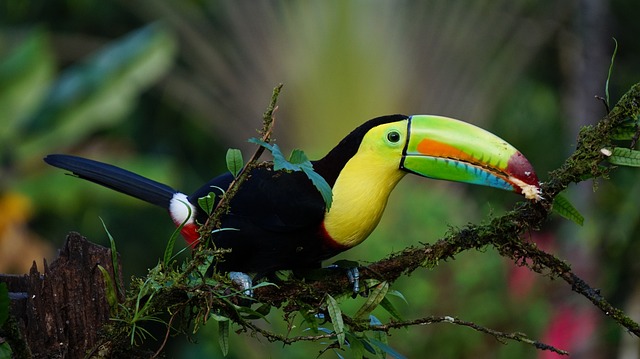
Costa Rica boasts an incredible diversity of flora and fauna. Making it a popular destination for nature lovers from all over the world.
The country is home to over 500,000 species of plants and animals. Including more than 800 bird species, 200 mammal species, and 9,000 plant species.
Some of the most iconic animals are found in Costa Rica. Include jaguars, toucans, sloths, and howler monkeys.
One reason for this abundance of biodiversity is the country’s unique geography.
Costa Rica sits at the intersection of two major land masses. North America and South America – creating a bridge between two distinct ecosystems.
Besides its tropical rainforests teeming with wildlife, Costa Rica also has cloud forests. They’re home to unique plant life like orchids and bromeliads.
Despite being small in size (it’s about the same size as West Virginia). Costa Rica is one of the world’s top destinations for eco-tourism.
Visitors can explore national parks like Corcovado or Tortuguero.
To see some of these incredible creatures up close or embark on a guided tour.
Led by local naturalists who can point out exotic plant life along the way.
Corcovado National Park
Corcovado National Park is one of the most popular destinations in Costa Rica. For eco-tourists and nature lovers.
This 424,000-acre park is located on the Osa Peninsula. And boasts a diverse range of flora and fauna.
Including jaguars, tapirs, sloths, monkeys, and over 400 species of birds. And more than 140 different types of reptiles.
The park’s rugged terrain includes pristine beaches and dense forests. With towering trees that are home to various types of monkeys and other animals.
Corcovado was declared a national park in 1975. After years of deforestation threatened its ecosystem. Today it remains protected by law.
Visitors can enjoy many activities such as hiking trails through lush rainforests. Or snorkeling in crystal-clear waters off one of the park’s many stunning beaches.
The park also offers several overnight options for those who want to camp. Or stay at remote lodges deep inside the forest.
If you are visiting Costa Rica then Corcovado should be on your must-visit list.
As it provides an unforgettable nature experience. It will leave you feeling rejuvenated and connected with nature.
National Symbols of Costa Rica
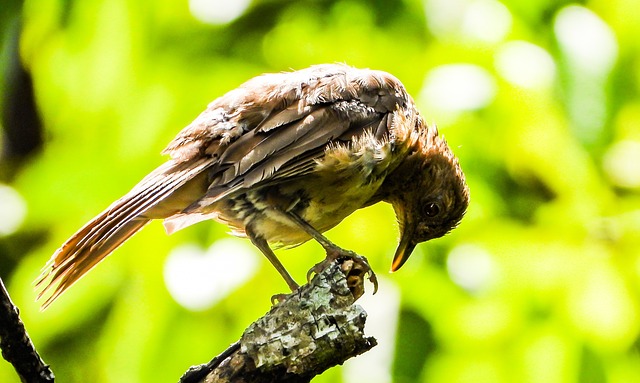
Costa Rica is a country with a rich cultural heritage and history. National symbols of Costa Rica reflect the country’s unique flora, fauna, and culture.
One such symbol is the Yiguirro bird, which was declared the national bird of Costa Rica in 1977.
The Yiguirro has a distinct call that marks the beginning of the rainy season in Costa Rica. And is often seen as a symbol of good luck.
Another important national symbol of Costa Rica is its flag.
The flag consists of five stripes – blue at both ends, red in the center, and white between. Representing Costa Rica’s political divisions.
The coat of arms on the flag depicts three volcanoes and an isthmus with two oceans on either side.
These symbols represent Costa Rica’s natural beauty. While also paying homage to its location as a bridge between North America and South America.
The Guaria Morada orchid is another significant national symbol. It holds great cultural value for Costa Ricans.
This purple flower is found all over the country. Is often used in traditional celebrations.
Like weddings or graduations as it represents love, life, and beauty.
Its popularity also led to it being named one of three official flowers by authorities back in 1939. Hence becoming one more emblematic icon for this nation!
Cultural Aspects of Costa Rica
Costa Rica is a culturally rich country. That has been influenced by various factors throughout history.
One of the most significant aspects of Costa Rican culture. Is its connection to nature and environmental conservation.
Costa Ricans, also known as Ticos. Have a deep appreciation for their natural surroundings. And take pride in preserving them.
Another cultural aspect of Costa Rica is its food.
Traditional dishes like gallo pinto (rice and beans). Ceviche (marinated seafood), and arroz con pollo (rice with chicken). Are popular among locals and tourists alike.
Coffee is also an essential part of Costa Rican culture. The country is known for producing some of the best coffee in the world.
Music plays an important role in Costa Rican culture. With genres like salsa, merengue, cumbia, and reggae being popular forms of expression.
The marimba is a percussion instrument made from wood that produces a distinct sound.
When played with mallets it’s considered the national instrument of Costa Rica.
And can often be heard at festivals and other cultural events throughout the country.
Historical Facts about Costa Rica
Costa Rica is a beautiful country with an equally fascinating history.
It’s believed that the first human beings to inhabit Costa Rica. Were indigenous tribes who migrated from South America around 10,000 BC.
The Chibcha, the Carib, and the Boruca were some of the early tribes in Costa Rica.
In 1502, Christopher Columbus became the first European to land in Costa Rica. During his fourth voyage to the Americas.
During Spanish colonization in the 16th century. Costa Rica was a part of Guatemala until it gained independence as a separate state on September 15, 1821.
Despite being under Spanish influence for more than three centuries. Costa Rican culture has preserved its pre-Columbian roots through its arts and festivals.
One of the most significant events that shaped modern-day Costa Rican history. Was abolishing its army on December 1st, 1948.
After President Jose Figueres Ferrer led a civil war. That ended a military dictatorship.
Since then, Costa Rica has invested in education and social welfare programs. Instead of military spending.
Making it one of only a few countries worldwide without an armed force today.
Costa Rica’s blue zones
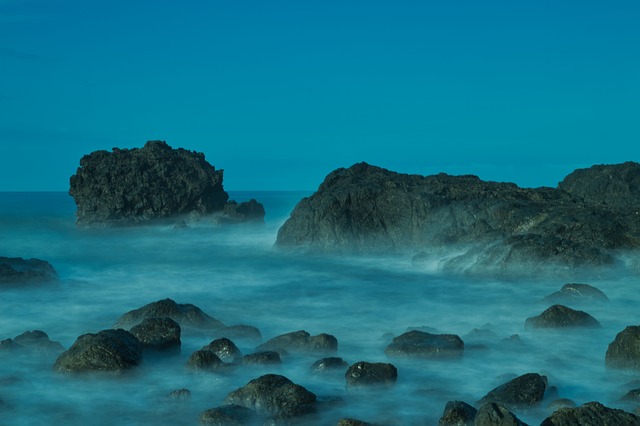
Costa Rica is one of the countries that form part of the blue zones. Areas where people live longer and healthier lives than the rest of the world.
In particular, Nicoya Peninsula in Costa Rica has been identified as a blue zone.
Due to its high concentration of centenarians. Individuals who have lived up to or beyond 100 years old.
According to researchers, several factors contribute to this phenomenon in Nicoya Peninsula.
Many residents lead active lifestyles. Engaged in physical work such as farming and ranching.
Their diet consists of plant-based foods. Like beans, corn, and squash combined with local fruits like mangos and papayas.
They’re connected with nature and their community. Which provides a sense of purpose and belonging.
Costa Rica’s status as a blue zone underscores its reputation. As one of the happiest countries in the world. With residents enjoying high levels of well-being.
Visitors can take inspiration from these healthy habits by engaging in outdoor activities.
Such as hiking or yoga while also enjoying local cuisine. That emphasizes fresh produce rather than processed foods.
Cuisine of Costa Rica
Costa Rican cuisine. It’s enjoyed and renowned for its vibrant flavors and fresh ingredients.
One of the most popular dishes is gallo pinto. Which is a mixture of rice and beans cooked with onions, peppers, and spices.
It’s often served as a breakfast food with eggs or fried plantains.
Another staple in Costa Rican cuisine is ceviche. A dish made from raw fish marinated in lime juice and mixed with vegetables.
Such as tomatoes, onions, and cilantro. It’s served as an appetizer or light meal.
Costa Rica also produces some of the best coffee in the world.
Coffee plantations are found throughout the country, especially in the central highlands.
Also to coffee, Costa Rica is also known for its tropical fruits. Such as papayas, pineapples, and mangos.
Which are used to make refreshing juices and desserts such as tres leches cake.
Costa Rica’s Sun Rises
The sun rises over the Pacific Ocean on the western coast of Costa Rica. Offering a spectacular sight to behold.
If you are an early riser or a photographer who loves capturing nature’s beauty. Then you must not miss witnessing the sunrise in Costa Rica.
The country boasts some of the best locations. From where you can witness this magnificent sight.
One such place is Tamarindo Beach in Guanacaste Province.
Here, you can enjoy a peaceful morning walk on the beach while soaking up the first rays of sunlight.
Another popular location is Jaco Beach in Puntarenas Province. Where surfers flock to catch waves as soon as dawn breaks.
Costa Rica’s tropical climate ensures that every sunrise paints a different picture. With unique hues and shades that make it worth waking up early for.
Whether you’re looking for adventure or want to relax and soak up nature’s beauty. Watching the sun rise over Costa Rican landscapes is an experience like no other.
Now, let’s answer some of those FAQ’s about Costa Rica
What is the cost of living in Costa Rica?
Costa Rica is a popular destination for people who want to enjoy a tropical paradise. With stunning beaches, lush rainforests, and incredible wildlife.
Yet, before you pack your bags and head to this Central American country. It’s important to consider the cost of living.
Compared to other countries in the region like Panama or Nicaragua. Costa Rica has a relatively high cost of living.
The main factor that contributes to the high cost of living in Costa Rica is housing.
Renting an apartment or house can be quite expensive depending on where you want to live.
For example, if you’re looking for accommodations near the beach. Or in popular tourist areas like Manuel Antonio or Tamarindo. Expect to pay more than if you were living inland.
Other factors that can affect the cost of living in Costa Rica include.
Transportation (owning a car can be expensive), healthcare (private insurance is recommended). And food (imported goods are pricier).
It’s also worth noting that wages in Costa Rica are generally low compared to North America or Europe. So it’s important to keep this in mind when budgeting for expenses.
Despite these challenges. Many ex-pats find that the benefits of living in Costa Rica far outweigh the costs!
What are the most popular tourist destinations in Costa Rica?
Costa Rica is a small Central American country. It has become a popular tourist destination over the years.
The country offers visitors an endless variety of natural wonders. From its lush rainforests and beautiful beaches to active volcanoes and hot springs.
One of the most popular tourist destinations in Costa Rica. Is Manuel Antonio National Park located on the Pacific coast.
It is a place where visitors can enjoy hiking trails through beautiful forests. Spotting wildlife such as monkeys, sloths, and toucans.
Another popular tourist destination in Costa Rica is
Arenal Volcano, National Park.
This park includes a beautiful volcano that was once one of the most active in the world. But has now entered into a resting phase.
Visitors to Arenal can enjoy various outdoor activities like zip-lining through the jungle. Or relaxing in thermal baths heated by volcanic activity.
Finally, many tourists flock to Tortuguero National Park on the Caribbean coast. During nesting season for sea turtles.
These magnificent creatures come ashore here. Between July and October each year to lay their eggs on these beaches at night time.
In conclusion. Costa Rica’s rich biodiversity makes it hard to choose only three top destinations.
Still Manuel Antonio National Park, Arenal Volcano National Park and Tortuguero National Park. Are some attractions that shouldn’t be missed when visiting this beautiful country!
What are the best ways to enjoy Costa Rica’s natural beauty?
Costa Rica is home to some of the most stunning natural beauty in the world. There are countless ways to explore and appreciate the country’s incredible natural wonders.
One of the best ways to take in Costa Rica’s breathtaking scenery is by embarking on a hike. Through one of its many national parks or reserves.
With over 26% of its land protected as national parks or wildlife refuges.
There are plenty of opportunities. For visitors to experience the country’s diverse ecosystems up close.
Another must-try activity for nature lovers in Costa Rica is zip-lining. Through its dense canopies.
Not only do these thrilling adventures offer an adrenaline rush. But they also provide a unique perspective on the country’s vibrant flora and fauna. That can’t be seen from ground level.
For those seeking a more relaxed way to enjoy Costa Rica’s natural beauty.
A boat tour along one of its rivers or coastlines offers gorgeous views. Without any physical exertion required.
What are the best beaches in Costa Rica?
With over 800 miles of coastline and two distinct coastlines. The Pacific and Caribbean – Costa Rica boasts some of the best beaches in the world.
One must-visit beach is Playa Manuel Antonio, located on the Pacific Ocean coast.
This pristine beach surrounded by lush vegetation offers crystal clear waters. Where visitors can swim or snorkel while admiring colorful marine life.
Another great option is Tamarindo Beach. Which lies on the northwestern part of Costa Rica’s Pacific coast.
The area has become a popular surf spot among locals and tourists alike.
On the side of the Caribbean sea, Puerto Viejo Beach stands out as one of the most beautiful beaches in Costa Rica.
With golden sands and turquoise waters that are perfect for swimming. Or relaxing under palm trees.
Other noteworthy beaches include.
Cocles Beach,
Gandoca-Manzanillo National Wildlife Refuge Beaches,
Punta Uva Beach to name a few.
Renewable energy in Costa Rica
Renewable energy has been a topic of discussion for quite some time. Costa Rica is one such country that has made significant progress in this area.
The Central American nation has been able to generate almost 99% of its electricity.
Using renewable sources primarily hydropower, wind, geothermal and solar energy.
This achievement is commendable considering the fact that most countries. Around the world are still heavily reliant on non-renewable sources of energy.
Costa Rica’s success in renewable energy can be attributed to several factors.
It was able to tap into its natural resources. By building hydroelectric dams on several rivers across the country.
It invested significantly in wind and geothermal power plants.
Also, tax incentives, offered to encourage private investment in renewable energy projects.
Moreover, Costa Rica aims to become carbon neutral by 2050. A goal that seems achievable given its progress so far.
In conclusion Costa Rica serves as an example for other countries.
Looking to shift towards greener and cleaner forms of energy production. While reducing their carbon footprint at the same time.
8 Facts About Costa Rica
But there’s more to Costa Rica than its natural beauty! Here are some interesting facts about this fascinating country:
- Costa Ricans (also known as Ticos) are friendly people who value their peaceful way of life. In fact, the country abolished its military in 1948 and has been without one ever since.
- Costa Rica is home to over 500,000 different species. Which represents almost 4% of the total number of species worldwide.
- The Arenal Volcano in Costa Rica was once one of the ten most active volcanoes on earth.
Until it entered a dormant phase in 2010. Visitors can still see steam coming out from its peak – an impressive sight!
- Costa Rica is a fascinating country with many unique and interesting facts.
For starters, it is home to over 500,000 different species of plants and animals. Making it one of the most biodiverse regions in the world.
The country also boasts some of the best coffee in the world. Thanks to its rich volcanic soil and perfect climate for coffee growing.
Costa Rica Has No Army
- Another interesting fact about Costa Rica is that it has no army. This may come as a surprise to those accustomed to countries having armed forces.
But Costa Rica abolished its military back in 1949. Instead, they have focused on investing in education and healthcare for their citizens.
- Costa Ricans also have an interesting saying: “Pura Vida,” which means pure life or simple life.
It’s a reflection of their laid-back lifestyle and appreciation for nature. Making it one of the happiest countries in the world.
In fact, over 25% of the country’s landmass is protected as national parks and reserves. Ensuring that future generations can enjoy its natural beauty too.
- Costa Rica is one of the world’s most biodiverse countries. With just 0.25% of the world’s landmass, Costa Rica contains 5% of the world’s biodiversity.
- The highest mountain in the country – Cerro Chirripó. With an elevation of 3,820 meters (12,533 feet)
I truly hope that you have enjoyed this read, if so please share. Thank you.


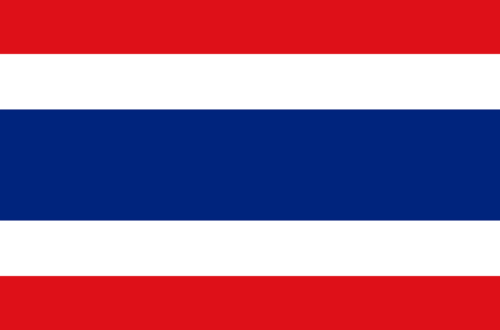


One Comment
Pingback: